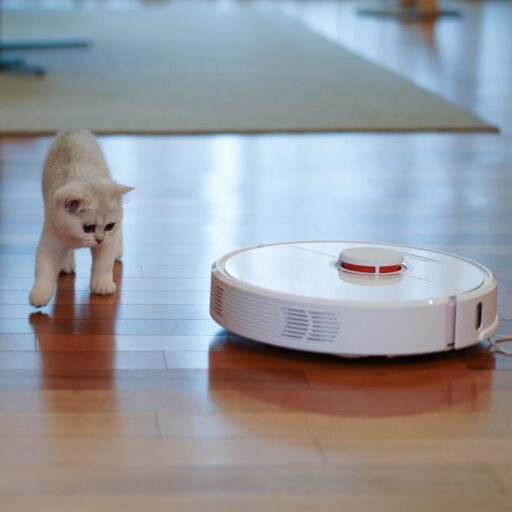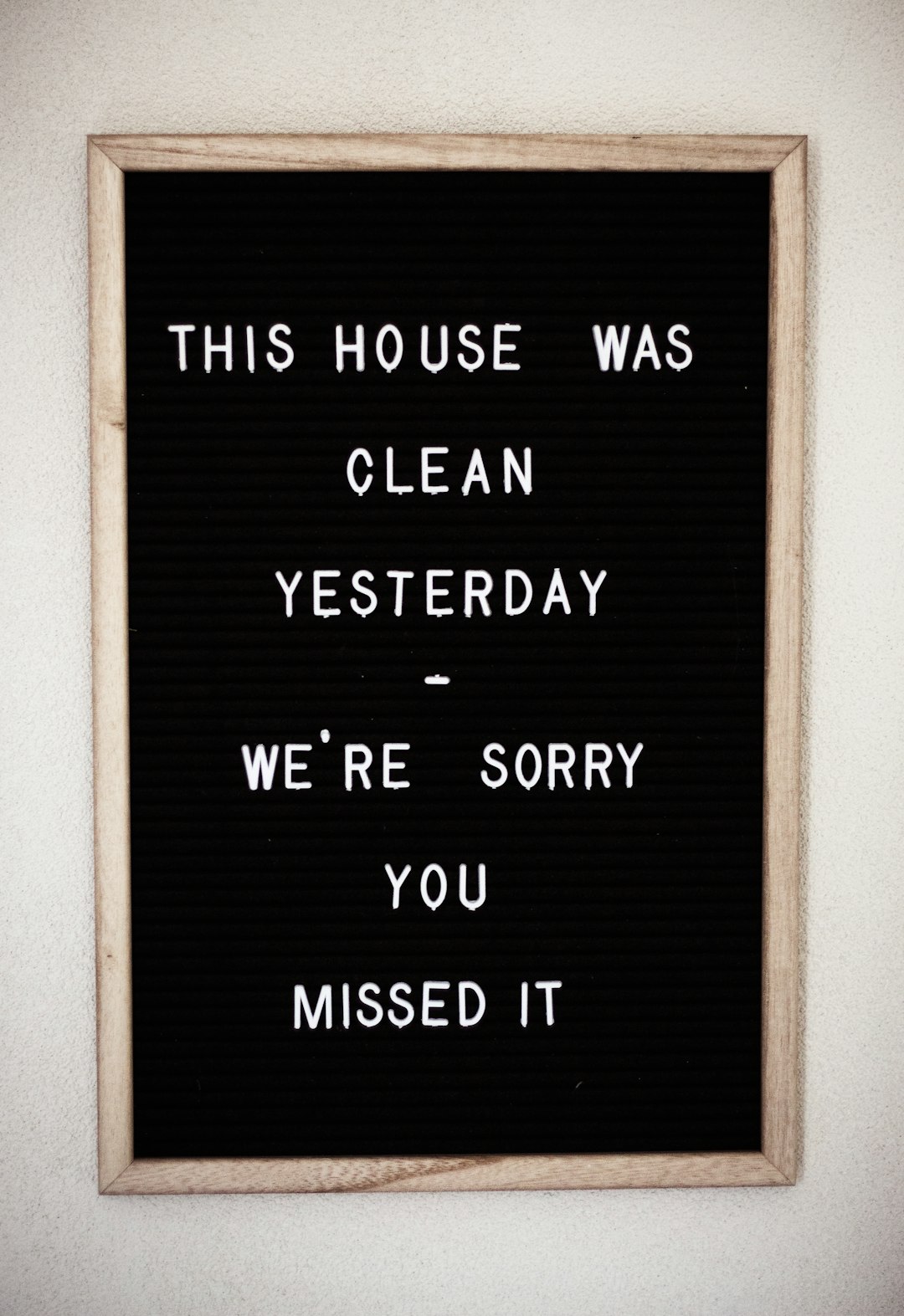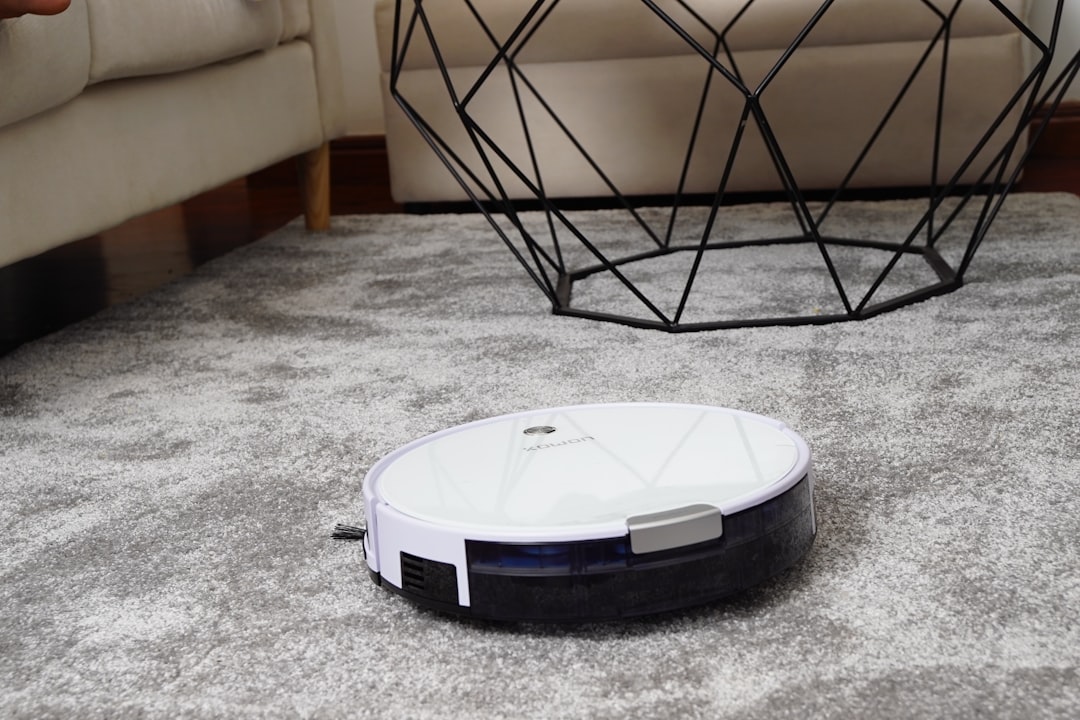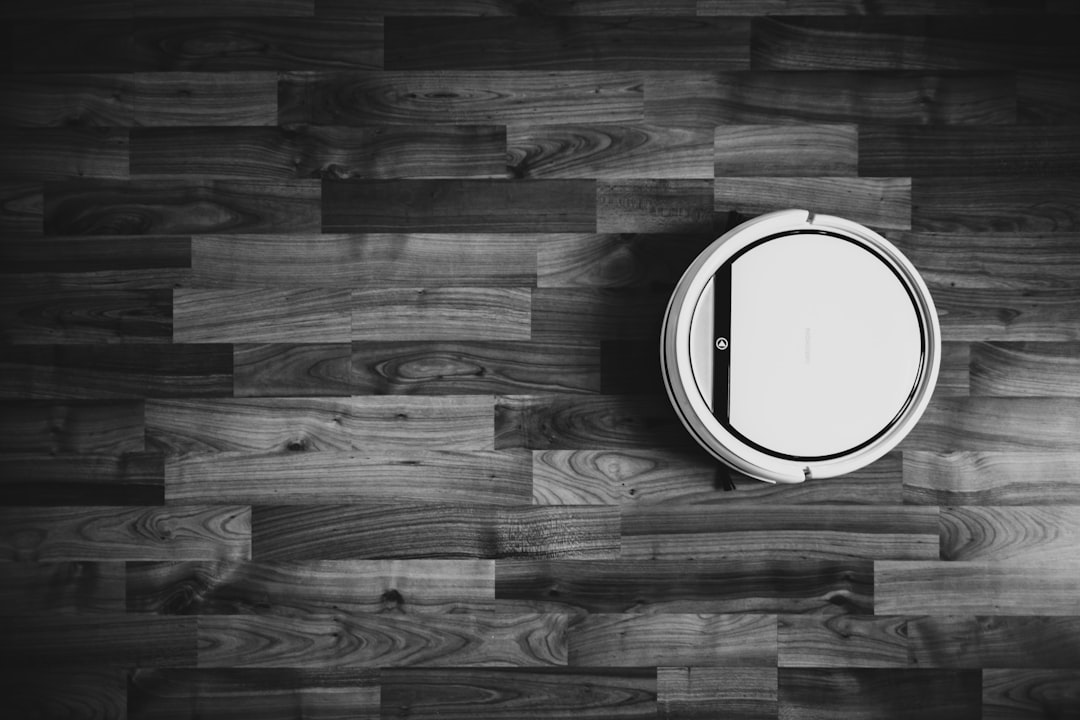Support our educational content for free when you purchase through links on our site. Learn more
How to Choose the Best Robot Vacuum [2024]
Save Time and Effort with the Perfect Cleaning Companion
Are you tired of spending hours vacuuming your floors? Do you wish there was a way to keep your home clean without the hassle? Look no further than a robot vacuum! These intelligent devices are designed to autonomously clean your floors, saving you time and effort. But with so many options available, how do you choose the best robot vacuum for your needs? In this comprehensive guide, we’ll walk you through everything you need to know to make an informed decision. From navigation technology to cleaning modes, we’ve got you covered. So let’s dive in and find the perfect cleaning companion!
Table of Contents
- Quick Answer
- Quick Tips and Facts
- Background: The Evolution of Robot Vacuums
- Why You Need a Robot Vacuum
- Choosing the Right Navigation Technology
- Finding the Perfect Cleaning Modes
- Suction Power: The Key to Effective Cleaning
- Smart Features for Ultimate Convenience
- Mopping Capability: Taking Cleaning to the Next Level
- Considering Noise Level for Peaceful Living
- Self-Emptying Capability: A Game-Changer
- Battery Life: Ensuring Sufficient Cleaning Time
- Efficient Filter Systems for Allergen Trapping
- Maintenance: Keeping Your Robot Vacuum in Top Shape
- FAQ
- Conclusion
- Recommended Links
- Reference Links
Quick Answer
Looking for a quick answer? Here are the key factors to consider when choosing the best robot vacuum:
- Navigation Technology: Opt for advanced navigation technologies like LiDAR or camera-based systems for precise mapping and obstacle detection.
- Cleaning Modes: Look for a robot vacuum with versatile cleaning modes such as auto, spot, and edge cleaning.
- Suction Power: Choose a robot vacuum with sufficient suction power to effectively clean different floor types.
- Smart Features: Consider robot vacuums with app control, voice commands, and scheduling capabilities for convenient operation.
- Mopping Capability: If you want your robot vacuum to mop as well, select a model with a mopping feature.
- Noise Level: Check the noise level of the robot vacuum to ensure it won’t disturb your peaceful living environment.
- Self-Emptying Capability: Consider a robot vacuum with self-emptying capability for hassle-free maintenance.
- Battery Life: Look for a robot vacuum with a long battery life to cover larger homes without interruption.
- Filter System: Opt for a robot vacuum with an efficient filter system, including HEPA filters, for effective allergen trapping.
- Maintenance: Consider the ease of maintenance and availability of replacement parts for long-term use.
CHECK PRICE on:
Quick Tips and Facts
Before we dive into the details, here are some quick tips and interesting facts about robot vacuums:
- Robot vacuums are designed to autonomously clean your floors, saving you time and effort.
- They use advanced sensors and navigation technology to navigate your home and avoid obstacles.
- Most robot vacuums can be controlled through smartphone apps, allowing you to schedule cleaning sessions and monitor their progress remotely.
- Some robot vacuums come with additional features like mopping capabilities, self-emptying bins, and voice control.
- Robot vacuums are suitable for various floor types, including hardwood, carpet, and tile.
- They are especially useful for pet owners, as they can effectively remove pet hair and dander from your floors.
- The battery life of robot vacuums can vary, so consider your home’s size and cleaning needs when choosing a model.
- Regular maintenance, such as emptying the dustbin and cleaning the brushes, is essential to keep your robot vacuum in optimal condition.
Now that you have a quick overview, let’s explore each aspect in more detail to help you choose the best robot vacuum for your home.
Background: The Evolution of Robot Vacuums
Robot vacuums have come a long way since their inception. The first robot vacuum, the Electrolux Trilobite, was introduced in 1996. While it was a groundbreaking invention at the time, it had limited functionality and was not widely adopted.
Over the years, advancements in technology have transformed robot vacuums into highly efficient cleaning machines. Today’s robot vacuums are equipped with advanced sensors, powerful motors, and intelligent navigation systems that allow them to navigate your home with ease.
The introduction of LiDAR (Light Detection and Ranging) technology has revolutionized robot vacuum navigation. LiDAR sensors emit laser beams to create a detailed map of your home, enabling the robot vacuum to navigate efficiently and avoid obstacles. This technology has significantly improved the cleaning performance and accuracy of robot vacuums.
In addition to navigation technology, robot vacuums now come with a range of features and capabilities that make them even more versatile and convenient. From mopping capabilities to self-emptying bins, these advancements have made robot vacuums an essential tool for modern households.
Why You Need a Robot Vacuum
Before we delve into the technical details, let’s explore why you need a robot vacuum in the first place. Here are some compelling reasons to consider:
-
Time-Saving: With a robot vacuum, you can say goodbye to the tedious task of manually vacuuming your floors. These autonomous devices can clean your home while you focus on other important tasks or simply relax.
-
Efficiency: Robot vacuums are designed to clean efficiently and thoroughly. Their advanced navigation systems allow them to cover every corner of your home, ensuring no dirt or dust is left behind.
-
Convenience: Most robot vacuums can be controlled through smartphone apps, allowing you to schedule cleaning sessions and monitor their progress remotely. You can even control them with voice commands using virtual assistants like Amazon Alexa or Google Assistant.
-
Pet-Friendly: If you have pets, you know how challenging it can be to keep your floors clean from pet hair and dander. Robot vacuums are equipped with powerful suction and specialized brushes to effectively remove pet hair, making them a must-have for pet owners.
-
Versatility: Robot vacuums are suitable for various floor types, including hardwood, carpet, and tile. They can seamlessly transition between different surfaces, ensuring a thorough clean throughout your home.
-
Allergen Control: Many robot vacuums come with HEPA filters, which are highly efficient at trapping allergens like dust mites, pollen, and pet dander. This makes them an excellent choice for individuals with allergies or asthma.
Now that you understand the benefits of owning a robot vacuum, let’s explore the key factors to consider when choosing the best one for your needs.
Choosing the Right Navigation Technology
Navigation technology is a crucial aspect to consider when choosing a robot vacuum. It determines how effectively the device can navigate your home and avoid obstacles. Here are some navigation technologies commonly used in robot vacuums:
-
LiDAR-Based Navigation: LiDAR (Light Detection and Ranging) technology uses laser beams to create a detailed map of your home. Robot vacuums equipped with LiDAR sensors can accurately navigate your home, even in low-light conditions. They can detect obstacles and adjust their cleaning path accordingly, ensuring efficient and thorough cleaning.
-
Camera-Based Navigation: Some robot vacuums use cameras to navigate your home. These cameras capture images of the surroundings and analyze them to create a map. While camera-based navigation can be effective, it may struggle in low-light conditions or if the camera lens gets dirty.
-
Sensor-Based Navigation: Sensor-based navigation relies on a combination of sensors, such as infrared sensors and bump sensors, to detect obstacles and navigate your home. While this technology is less advanced compared to LiDAR or camera-based navigation, it can still provide reliable navigation in most cases.
When choosing a robot vacuum, opt for models with advanced navigation technologies like LiDAR or camera-based systems. These technologies offer more precise mapping and obstacle detection, resulting in more efficient cleaning.
CHECK PRICE on:
Finding the Perfect Cleaning Modes
Robot vacuums come with various cleaning modes to suit different cleaning needs. Understanding these modes will help you choose a robot vacuum that matches your requirements. Here are some common cleaning modes to look for:
-
Auto Cleaning: The auto cleaning mode is the default mode for most robot vacuums. In this mode, the robot vacuum autonomously navigates your home, cleaning as it goes. It adjusts its cleaning pattern based on the layout of your home, ensuring thorough coverage.
-
Spot Cleaning: Spot cleaning mode is designed for targeted cleaning of specific areas. If you have a particularly dirty spot or a spill, you can activate spot cleaning mode, and the robot vacuum will focus on that area, providing extra cleaning power.
-
Edge Cleaning: Edge cleaning mode is ideal for cleaning along walls and edges. The robot vacuum follows the perimeter of your room, ensuring that dust and debris along the edges are effectively removed.
-
Scheduled Cleaning: Many robot vacuums allow you to schedule cleaning sessions in advance. You can set specific times for the robot vacuum to start cleaning, ensuring that your floors are always clean, even when you’re not at home.
Consider your cleaning needs and preferences when choosing a robot vacuum. If you have specific areas that require extra attention, look for models with spot cleaning or edge cleaning modes. If you prefer a hands-off approach, opt for a robot vacuum with scheduled cleaning capabilities.
CHECK PRICE on:
Suction Power: The Key to Effective Cleaning
The suction power of a robot vacuum determines how effectively it can pick up dirt, dust, and debris from your floors. Higher suction power generally results in better cleaning performance, especially on carpets and rugs. When considering the suction power of a robot vacuum, look for the unit of measurement called “Pa” (Pascal). The higher the Pa value, the more powerful the suction.
While suction power is an important factor, it’s worth noting that other factors, such as brush design and cleaning algorithms, also contribute to the overall cleaning performance. A robot vacuum with a well-designed brush system and efficient cleaning algorithms can still provide excellent cleaning results, even with lower suction power.
Consider the type of flooring in your home and the level of dirt and debris you typically encounter. If you have carpets or rugs and deal with a significant amount of dirt, opt for a robot vacuum with higher suction power. For homes with mostly hard floors and minimal dirt, a robot vacuum with moderate suction power should suffice.
CHECK PRICE on:
Smart Features for Ultimate Convenience
Robot vacuums have evolved beyond simple cleaning machines. They now come with a range of smart features that enhance convenience and ease of use. Here are some smart features to consider when choosing a robot vacuum:
-
App Control: Many robot vacuums can be controlled through smartphone apps. These apps allow you to start, stop, and schedule cleaning sessions, adjust cleaning modes, and monitor the cleaning progress remotely. Look for robot vacuums with user-friendly and feature-rich apps for seamless control.
-
Voice Commands: Some robot vacuums are compatible with virtual assistants like Amazon Alexa or Google Assistant. This allows you to control the robot vacuum using voice commands, making cleaning even more effortless.
-
Mapping and Navigation: Advanced robot vacuums can create detailed maps of your home, allowing you to see the cleaning progress and even set virtual boundaries. Look for models with mapping and navigation features if you want more control over the cleaning process.
-
Automated Charging and Resuming: Robot vacuums with automated charging and resuming capabilities can detect low battery levels and return to their charging dock to recharge. Once fully charged, they can resume cleaning from where they left off, ensuring uninterrupted cleaning sessions.
Consider your preference for control and automation when choosing a robot vacuum. If you enjoy the convenience of smartphone control and voice commands, look for models with app control and voice assistant compatibility. If you prefer a more hands-off approach, opt for a robot vacuum with advanced mapping and navigation features.
CHECK PRICE on:
Mopping Capability: Taking Cleaning to the Next Level
If you want your robot vacuum to do more than just vacuuming, consider models with mopping capabilities. These robot vacuums can sweep and mop your floors simultaneously, providing a thorough clean. Here are some key points to consider when choosing a robot vacuum with mopping capability:
-
Water Tank Capacity: Check the water tank capacity of the robot vacuum. A larger water tank means longer mopping sessions without the need for frequent refills.
-
Mopping Modes: Look for robot vacuums with adjustable mopping modes. Some models allow you to control the water flow rate, allowing you to customize the mopping intensity based on your flooring type and cleaning needs.
-
Mopping Pads: Consider the type of mopping pads used by the robot vacuum. Microfiber mopping pads are commonly used as they are effective at trapping dirt and debris. Some robot vacuums also offer disposable mopping pads for added convenience.
-
Compatibility with Cleaning Solutions: If you prefer to use cleaning solutions for mopping, check if the robot vacuum is compatible with them. Some models have designated compartments for cleaning solutions, allowing you to achieve a deeper clean.
Keep in mind that mopping capabilities are not as advanced as dedicated mopping robots or manual mopping. However, they can still provide a convenient way to maintain clean floors in between thorough mopping sessions.
CHECK PRICE on:
Considering Noise Level for Peaceful Living
Noise level is an important consideration, especially if you plan to run your robot vacuum during the day or while you’re at home. While most robot vacuums are designed to operate quietly, some models may produce more noise than others. Here are some points to consider when evaluating the noise level of a robot vacuum:
-
Decibel (dB) Rating: The noise level of a robot vacuum is typically measured in decibels (dB). Lower dB ratings indicate quieter operation. Look for robot vacuums with lower dB ratings if noise is a concern for you.
-
Noise Reduction Features: Some robot vacuums come with noise reduction features, such as improved motor design or sound insulation. These features can help minimize noise without compromising cleaning performance.
-
Quiet Mode: Check if the robot vacuum has a dedicated quiet mode. Quiet mode reduces the suction power and motor speed, resulting in quieter operation. This mode is ideal for running the robot vacuum while you’re at home or during quiet hours.
Consider your tolerance for noise and the environment in which you’ll be using the robot vacuum. If you have a newborn or pets that are sensitive to noise, opt for models with lower noise levels or dedicated quiet modes.
CHECK PRICE on:
Self-Emptying Capability: A Game-Changer
Emptying the dustbin of a robot vacuum can be a tedious task, especially if you have to do it frequently. That’s where self-emptying robot vacuums come in. These innovative devices can automatically empty their dustbins into a larger container, eliminating the need for manual emptying. Here are some key points to consider when choosing a robot vacuum with self-emptying capability:
-
Dustbin Capacity: Check the dustbin capacity of the self-emptying robot vacuum. A larger dustbin capacity means fewer trips to the disposal container.
-
Self-Emptying Mechanism: Different self-emptying robot vacuums employ different mechanisms to empty the dustbin. Some models use disposable dust bags, while others use a built-in container that needs to be emptied manually. Consider your preference and convenience when choosing a self-emptying robot vacuum.
-
Frequency of Emptying: Check how often the self-emptying mechanism needs to be emptied. Some models can hold several weeks’ worth of dirt and debris, while others may require more frequent emptying.
-
Compatibility with Allergen Trapping Bags: If you have allergies or asthma, consider self-emptying robot vacuums that use allergen trapping bags. These bags can effectively trap allergens, preventing them from being released back into the air during emptying.
Self-emptying robot vacuums can be a game-changer for those who want a truly hands-off cleaning experience. They eliminate the need for frequent manual emptying, allowing you to enjoy a cleaner home with minimal effort.
CHECK PRICE on:
Battery Life: Ensuring Sufficient Cleaning Time
The battery life of a robot vacuum determines how long it can clean before needing to recharge. Longer battery life is especially important for larger homes or those with multiple floors. Here are some points to consider when evaluating the battery life of a robot vacuum:
-
Run Time: The run time of a robot vacuum refers to how long it can clean on a single charge. Look for models with longer run times if you have a larger home or if you prefer longer cleaning sessions.
-
Recharge and Resume: Some robot vacuums have the ability to recharge and resume cleaning. This feature allows the robot vacuum to automatically return to its charging dock when the battery is low, recharge, and then resume cleaning from where it left off. This is particularly useful for larger homes or those with multiple floors.
-
Charging Time: Consider the charging time of the robot vacuum. Shorter charging times mean less downtime between cleaning sessions.
Evaluate your home’s size and cleaning needs when considering the battery life of a robot vacuum. If you have a larger home or multiple floors, opt for models with longer run times and recharge and resume capabilities.
CHECK PRICE on:
Efficient Filter Systems for Allergen Trapping
If you or your family members suffer from allergies or asthma, choosing a robot vacuum with an efficient filter system is crucial. A good filter system can effectively trap allergens like dust mites, pollen, and pet dander, improving the air quality in your home. Here are some key points to consider when evaluating the filter system of a robot vacuum:
-
HEPA Filters: HEPA (High-Efficiency Particulate Air) filters are highly efficient at trapping small particles, including allergens. Look for robot vacuums with HEPA filters if you have allergies or asthma.
-
Multiple Filter Layers: Some robot vacuums use multiple filter layers to enhance filtration. These layers can include pre-filters, foam filters, and HEPA filters. The more layers, the better the filtration performance.
-
Filter Replacement: Check the availability and cost of filter replacements for the robot vacuum. Regular filter replacement is essential to maintain optimal filtration performance.
Consider your specific allergy concerns and the air quality in your home when choosing a robot vacuum with an efficient filter system. HEPA filters and multiple filter layers can significantly improve the air quality and reduce allergens in your home.
CHECK PRICE on:
Maintenance: Keeping Your Robot Vacuum in Top Shape
Regular maintenance is essential to keep your robot vacuum in optimal condition and ensure its longevity. Here are some maintenance tips to consider:
-
Empty the Dustbin: Regularly empty the dustbin of your robot vacuum to prevent it from getting clogged and affecting the cleaning performance. The frequency of emptying depends on the size of the dustbin and the amount of dirt and debris in your home.
-
Clean the Brushes: Remove any hair or debris tangled in the brushes of your robot vacuum. This will prevent the brushes from getting clogged and ensure efficient cleaning.
-
Replace Filters: Follow the manufacturer’s recommendations for filter replacement. Regularly replacing filters will maintain optimal filtration performance and prevent allergens from being released back into the air.
-
Check for Blockages: Periodically check for blockages in the robot vacuum’s suction pathway and brush system. Clear any obstructions to ensure uninterrupted cleaning.
-
Clean the Sensors: Dust and debris can accumulate on the sensors of your robot vacuum, affecting its navigation capabilities. Clean the sensors regularly to ensure accurate mapping and obstacle detection.
By following these maintenance tips, you can keep your robot vacuum in top shape and enjoy optimal cleaning performance for years to come.
FAQ
What brand of robot vacuum is best?
There are several reputable brands in the robot vacuum market, each offering unique features and capabilities. Some popular brands include:
- iRobot Roomba: Known for their advanced navigation technology and powerful cleaning performance.
- Ecovacs: Offers a wide range of robot vacuums with various features and price points.
- Neato Robotics: Known for their laser-based navigation technology and efficient cleaning algorithms.
- Shark: Offers robot vacuums with powerful suction and versatile cleaning modes.
- Eufy: Known for their affordable yet feature-rich robot vacuums.
The best brand for you depends on your specific needs and preferences. Consider factors like navigation technology, cleaning modes, smart features, and budget when choosing a brand.
Read more about “Which Robot Vacuum Cleaner is Best? …”
How much suction power should a robot vacuum have?
The suction power of a robot vacuum is measured in Pascal (Pa). Higher suction power generally results in better cleaning performance, especially on carpets and rugs. For effective cleaning, look for robot vacuums with a suction power of at least 1500 Pa. However, keep in mind that suction power is not the only factor that determines cleaning performance. Brush design, cleaning algorithms, and navigation technology also play important roles.
Are more expensive robot vacuums worth it?
More expensive robot vacuums often come with advanced features and technologies that enhance cleaning performance and convenience. These features may include advanced navigation systems, mopping capabilities, self-emptying bins, and app control. If you value these additional features and are willing to invest in a higher-end model, then more expensive robot vacuums can be worth it. However, if you have simpler cleaning needs and don’t require advanced features, there are plenty of affordable options available that can still provide excellent cleaning performance.
What are the disadvantages of a robot vacuum cleaner?
While robot vacuums offer many benefits, they also have some limitations. Here are a few disadvantages to consider:
-
Limited Cleaning Power: Robot vacuums may not have the same cleaning power as traditional upright or canister vacuums. They are designed for maintenance cleaning rather than deep cleaning.
-
Inability to Navigate Stairs: Robot vacuums cannot navigate stairs, so you’ll still need to manually clean those areas.
-
Higher Initial Cost: Robot vacuums can be more expensive than traditional vacuums, especially models with advanced features.
-
Maintenance and Repairs: Robot vacuums require regular maintenance, such as emptying the dustbin and cleaning the brushes. They may also require occasional repairs or replacement parts.
Despite these limitations, robot vacuums offer unmatched convenience and time-saving benefits. They can significantly reduce the time and effort required to keep your floors clean.
Read more about “The 5 Best Robot Vacuums for Pet Hair in 2024”
Conclusion
Choosing the best robot vacuum for your needs can be a daunting task, but armed with the right information, you can make an informed decision. Consider factors like navigation technology, cleaning modes, suction power, smart features, mopping capability, noise level, self-emptying capability, battery life, filter system, and maintenance requirements. By evaluating these aspects and matching them to your specific needs, you can find the perfect cleaning companion that will save you time and effort.
In conclusion, we recommend considering the iRobot Roomba series for their advanced navigation technology, powerful cleaning performance, and user-friendly app control. They offer a range of models to suit different budgets and cleaning needs. Remember to regularly maintain your robot vacuum to ensure optimal performance and longevity.
Thank you for joining us on this journey to find the best robot vacuum. We hope this guide has been helpful, and may your floors always be clean with the help of your trusty robot vacuum!
Recommended Links
- Robotic Applications in Home Cleaning
- Robotics
- Robotic Applications in Household Cleaning
- Robotics Engineering
- Which Robot Vacuum Cleaner is Best? 2024
CHECK PRICE on:






